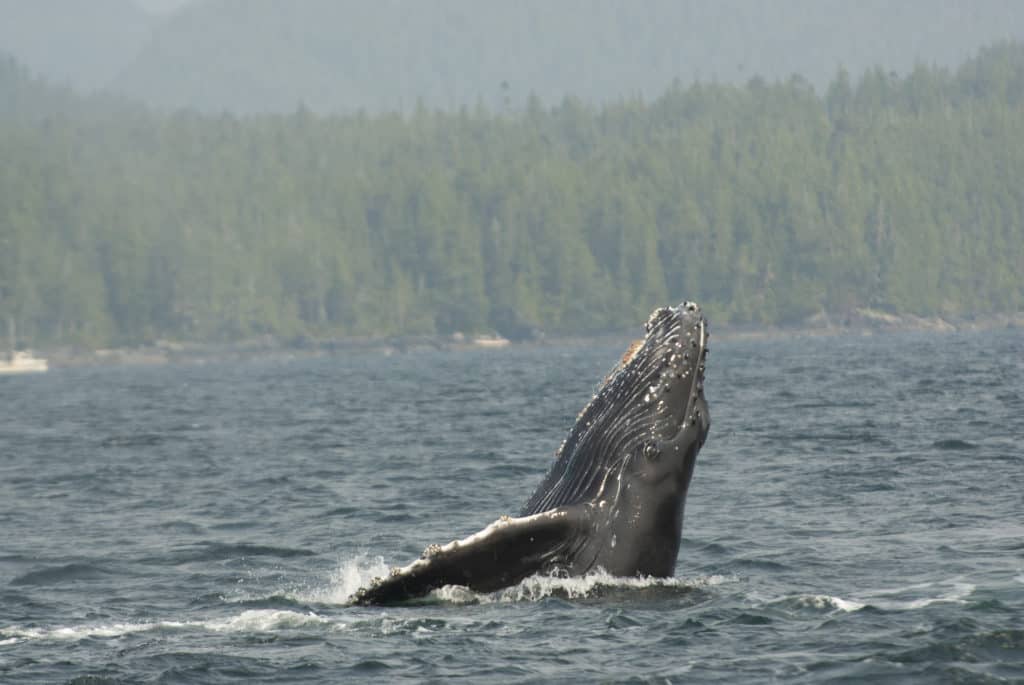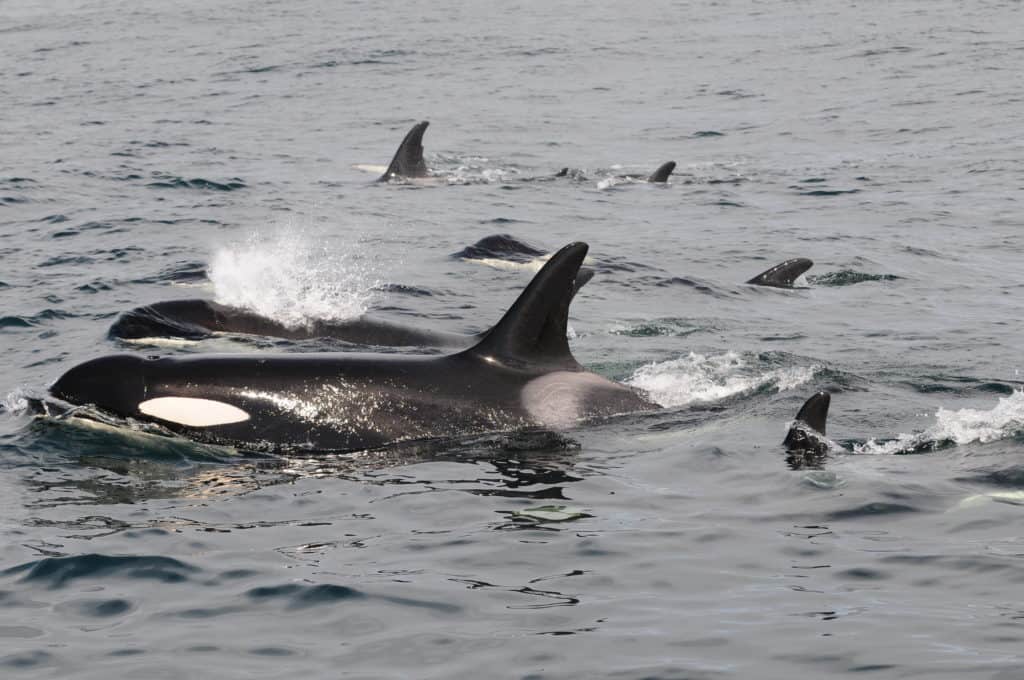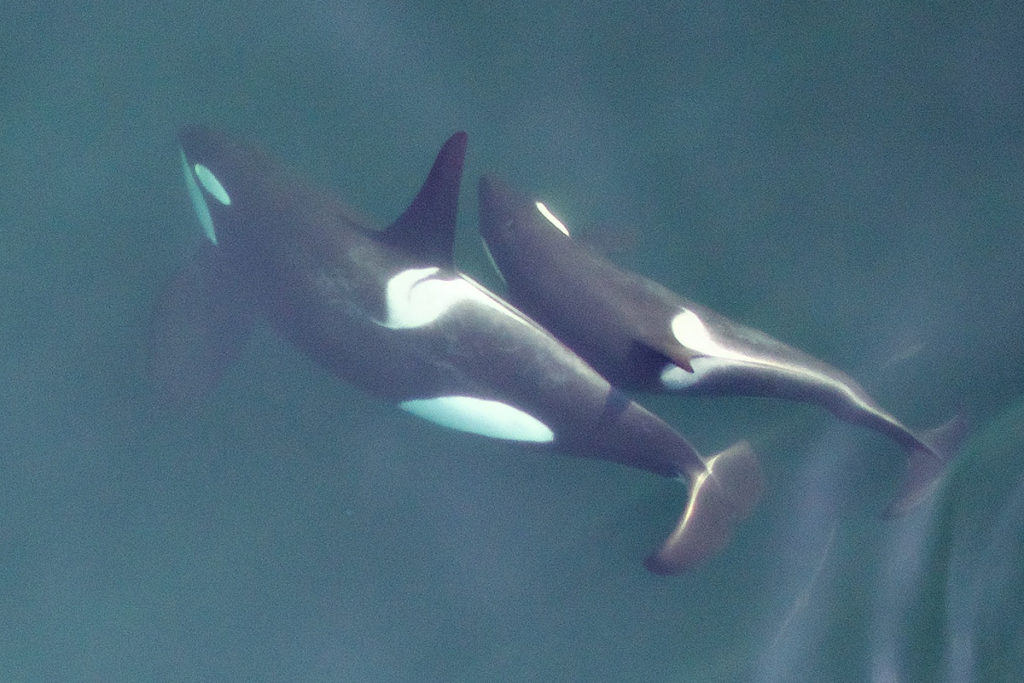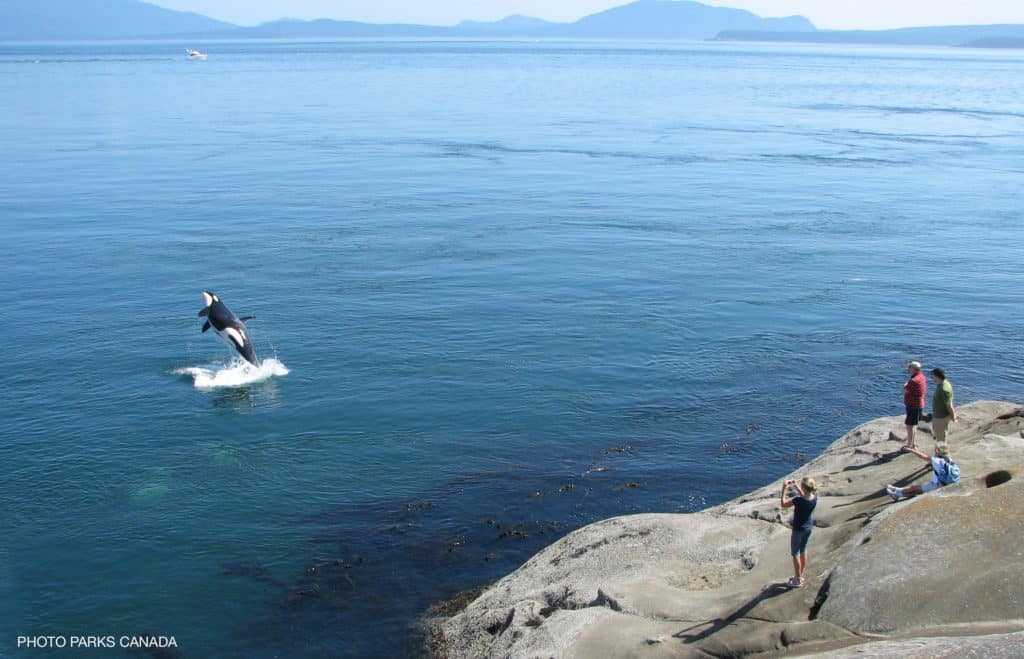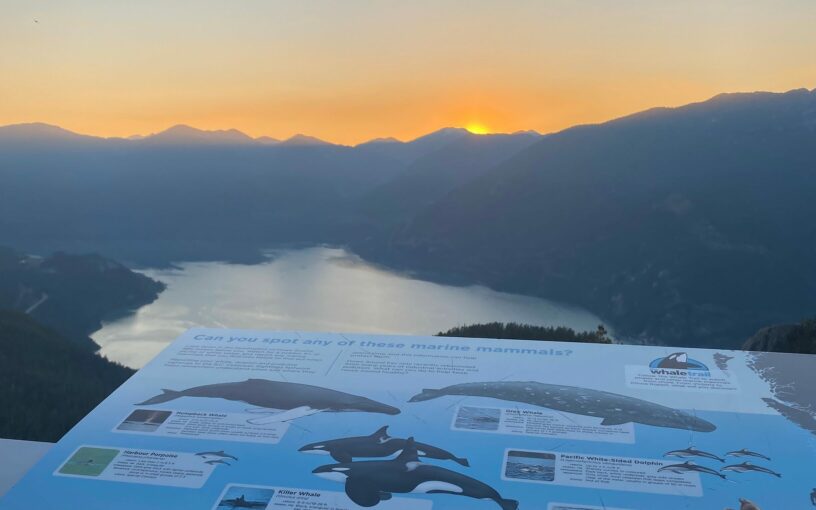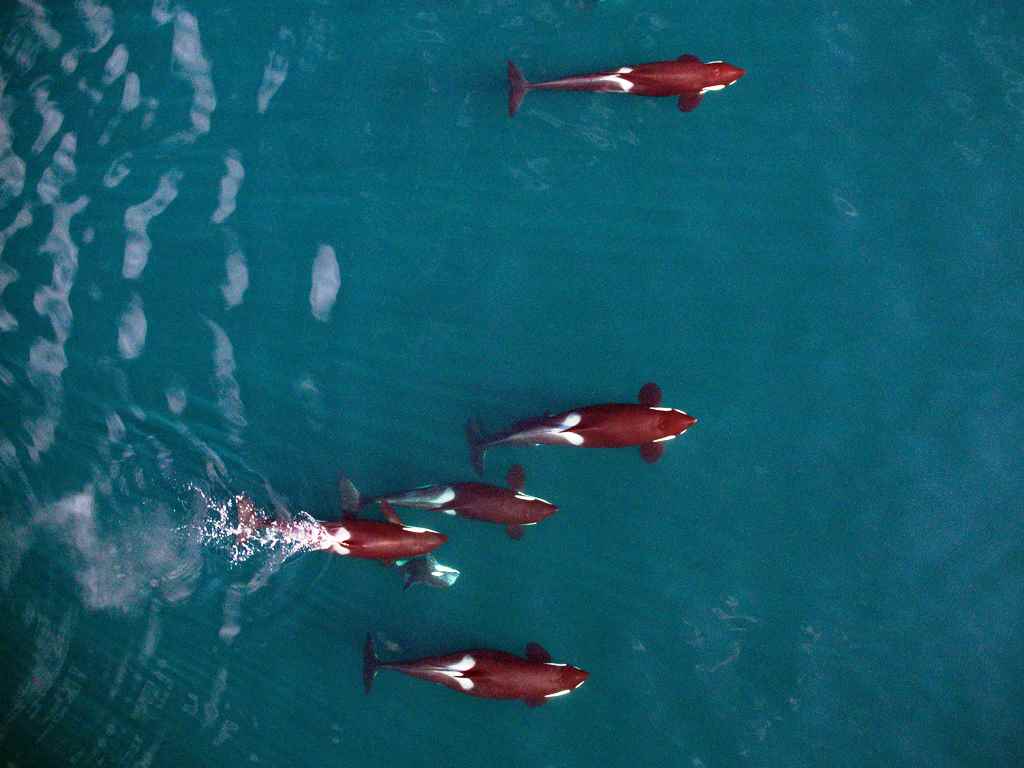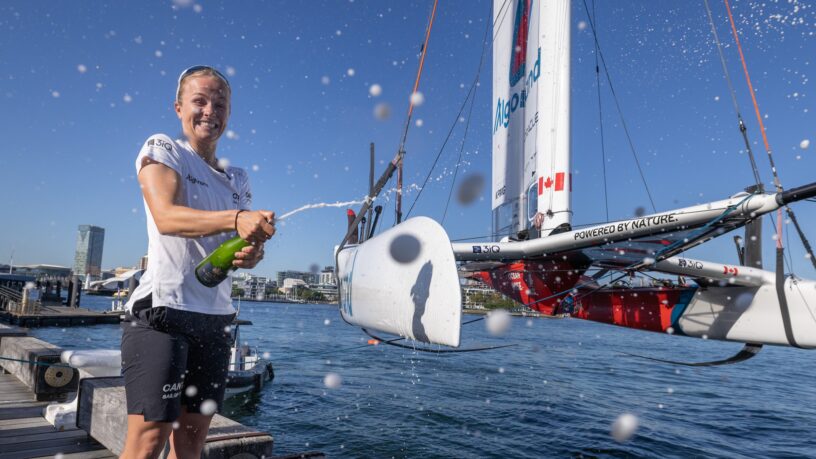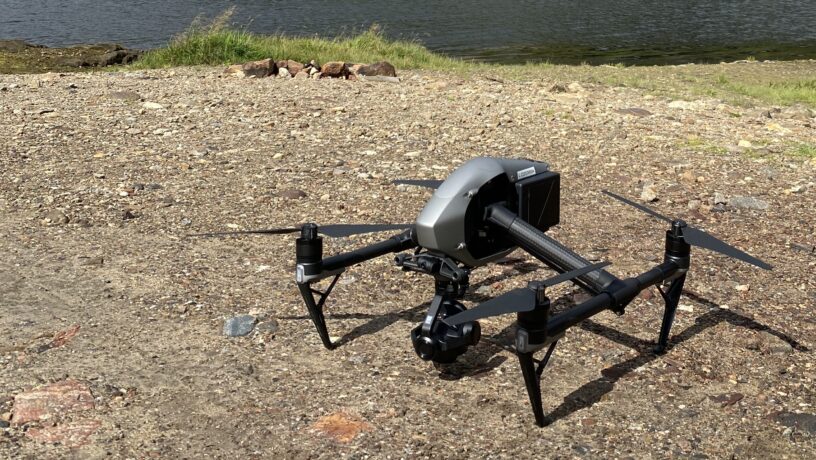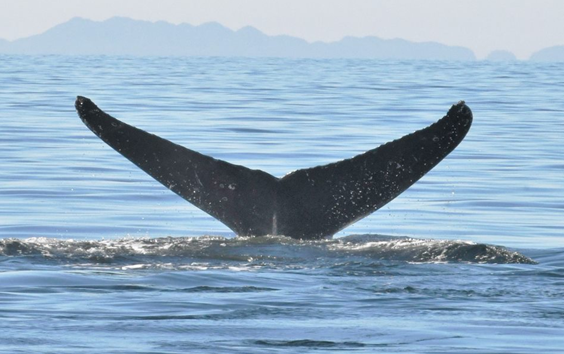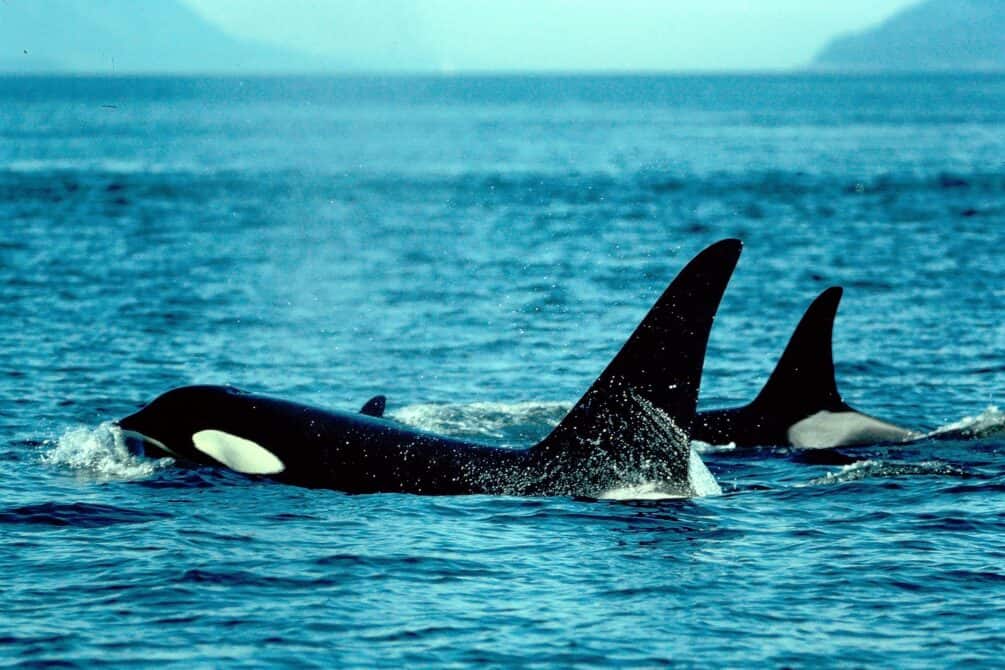
New Ocean Wise Display at the Shaw Centre for the Salish Sea Highlights the Plight of Endangered Orcas
Ocean Wise and the Shaw Centre for the Salish Sea have partnered to install a new display to highlight the plight of southern resident killer whales (orcas) in our local waters.
Everett’s Tale
The display tells the story of a young male killer whale named Everett (J18), whose body washed ashore near Vancouver, BC, in early 2000.
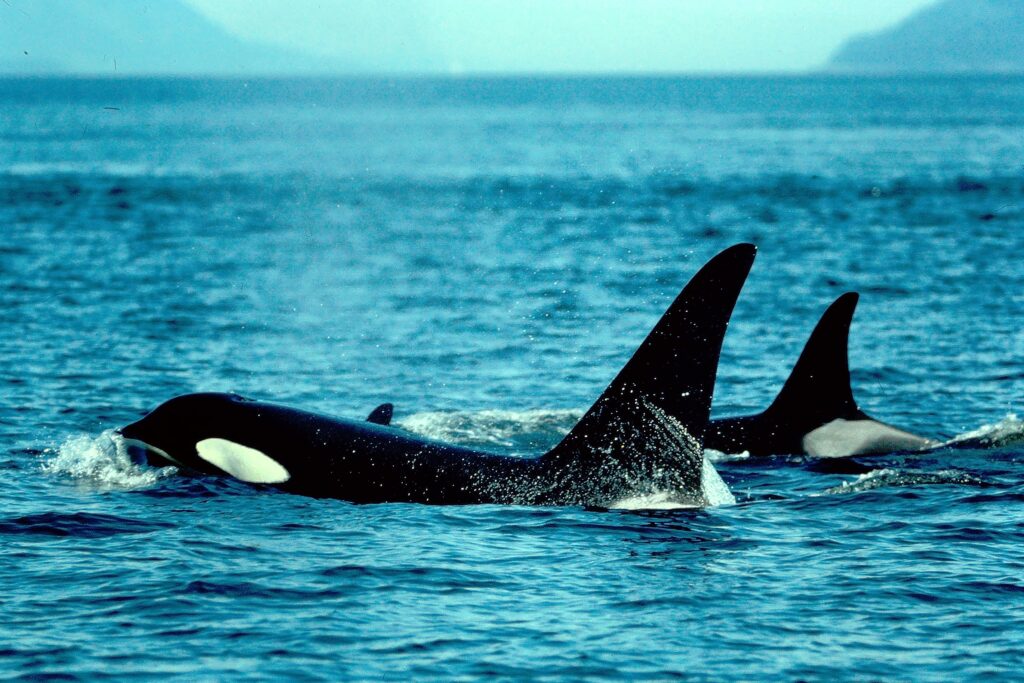
A necropsy determined that his young life was cut short due to a bacterial infection for which he had no immunity and revealed that he also suffered from reproductive development issues. The necropsy found high levels of toxic chemical compounds known as Polychlorinated biphenyls (PCBs) in his tissues, which are known causes of immune and reproductive impairment. PCBs were historically used in products such as industrial lubricants, paints, and adhesives. These pollutants were released into our environment in huge quantities throughout the 20th Century, making their way into our ocean where they persist to this day. By a process known as “bioaccumulation”, PCBs work their way through marine food webs, beginning with the smallest organisms and eventually ending up in animals at the top of the food chain – such as killer whales like Everett.
Everett was one of the 73 remaining southern resident killer whales that inhabit our Salish Sea waters. Listed as “Endangered” in both Canada and the United States, this population of killer whales has decreased due to the harmful activities of humans. Population declines have been attributed to exposure to persistent environmental pollutants, decreased food quality and availability, and acoustic and physical disturbance from vessels.
Everett’s skull will be on display at the Shaw Centre for the Salish Sea alongside a video on specied ID presented by Ocean Wise. His tragic story serves as an important reminder of the impact human activities have on our oceans and demonstrates the simple, everyday actions community members can take to help protect the iconic animals that call these waters home.
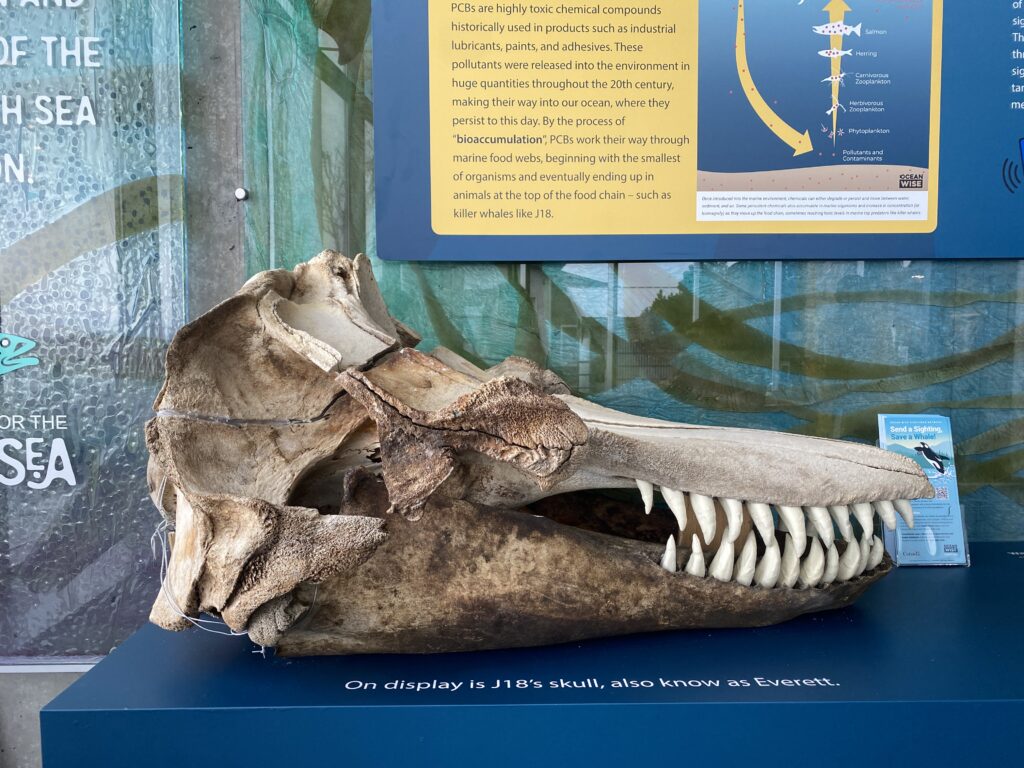
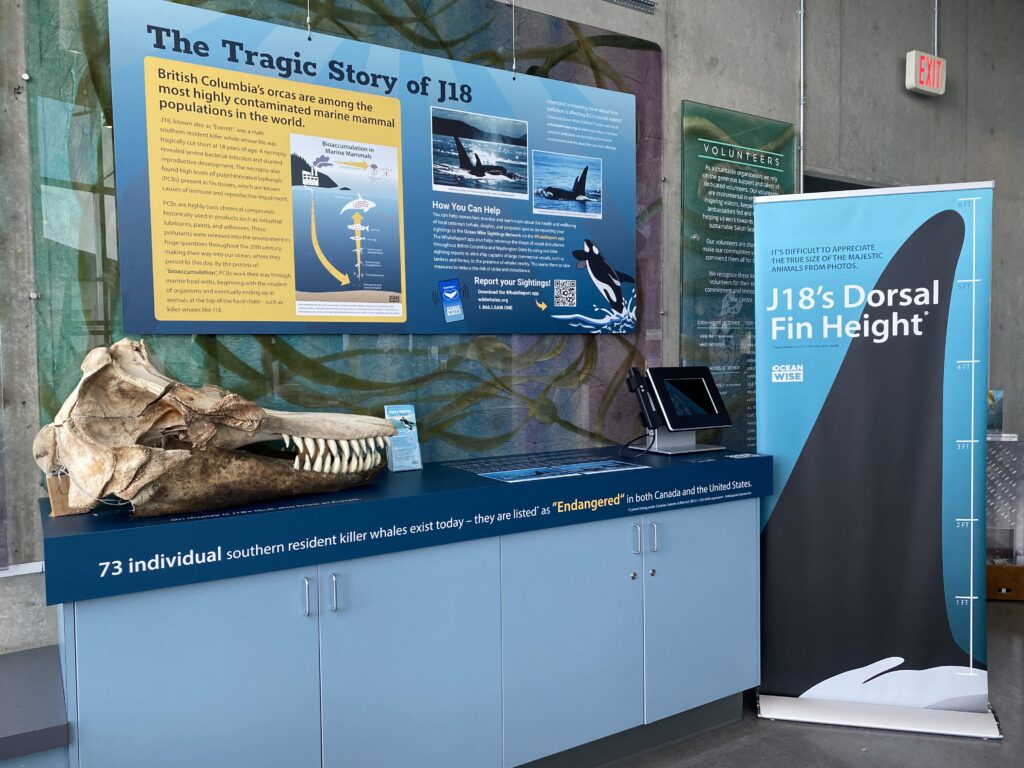
The plight of southern resident killer whales
Southern resident killer whales are exclusively fish eaters, with a strong preference for large, fatty Chinook salmon – of which the majority of stocks are in severe decline. A recent study conducted by UBC researcher Dr. Fanny Couture found that this population of killer whales is often unable to meet their caloric needs for prolonged periods, including a three-year stretch between 2018 to 2020. At times of prey scarcity, the whales are forced to metabolize their blubber reserves, which in turn releases PCBs and other toxins into their bloodstreams. These toxins are thought to impair the immune and reproductive systems of individuals. Nursing females can also pass toxins to their young through their milk.
Disturbance from recreational and commercial vessels can amplify decreases in prey availability by impacting the whales’ ability to find prey and deterring them from entering important foraging areas.
Decreasing vessel disturbance can have an immediate positive impact, allowing killer whales to find food more effectively.
How you can help
You can help create quieter waters for killer whales and other species by reporting your sightings to the Ocean Wise Sightings Network via the WhaleReport app. The WhaleReport app helps to minimize the threat of vessel disturbance throughout British Columbia and Washington State by using real time sighting reports to alert ship captains of large commercial vessels, like tankers and ferries, to the presence of whales in their travel path. This advance warning allows them to take measures to reduce the risk of strike and disturbance, such as slowing down, altering course, or increasing vigilance. Visit wildwhales.org to learn more.
Ocean Wise is also working to document the levels and trends of hundreds of contaminants of concern in mussels and nearshore ocean sediments via the Ocean Wise Pollution Tracker. Ocean Wise’s Pollution Tracker is a coast-wide monitoring program for British Columbia. Its most recent findings included a report on PCB contamination in B.C.. Findings demonstrated that the highest levels of PCBs were found in Victoria Harbour and Prince Rupert Harbour, reflecting historical activities and discharges to the marine environment, as well as oceanographic conditions. To learn more about the levels and trends of contaminants of concern in your local waters, visit PollutionTracker.org.
This installation was made possible by generous funding from Fisheries and Oceans Canada by way of its Habitat Stewardship Program for Aquatic Species at Risk.
About the Shaw Centre for the Salish Sea
The Shaw Centre for the Salish Sea is a one-of-a-kind aquarium and learning centre located on the waterfront in Sidney on the traditional territory of the W̱SÁNEĆ people. This interactive facility connects the public with the Salish Sea Bioregion and its ecosystems through engagement, knowledge, and awareness. For information about admission and hours to the Shaw Centre for the Salish Sea, visit salishseacentre.org.
Posted April 25, 2023 by Rosemary Newton
